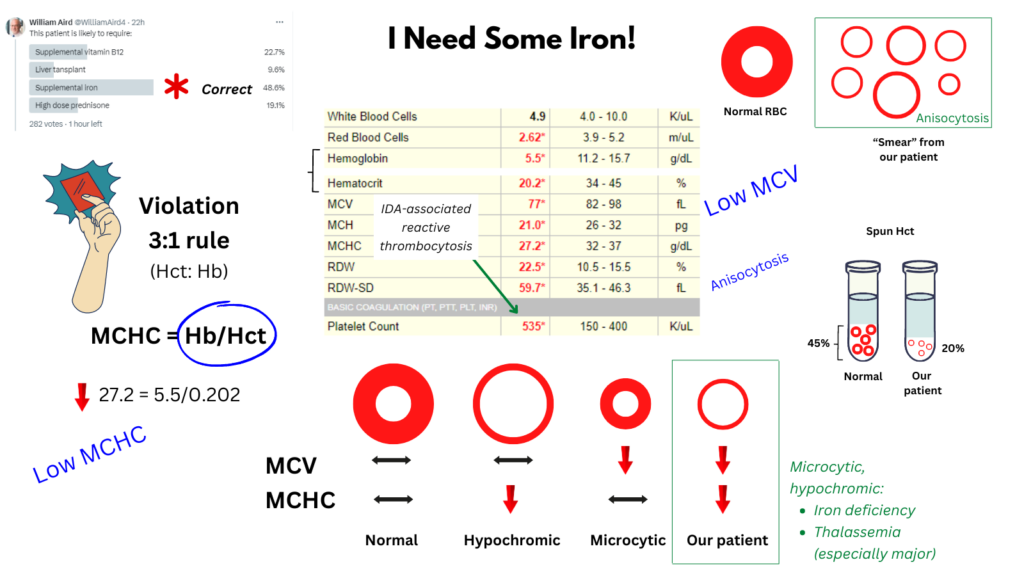I posted a poll on Twitter asking how learners/users would treat a patient with a Hb 5.5 g/dL and Hct 20.2%. The correct – and most popular – answer was iron supplementation. The clue is a violation in the 3:1 rule, which is another way of saying the mean corpuscular hemoglobin concentration (MCHC) is abnormal, in this case greatly decreased.
The 3:1 rule states that under normal conditions, the Hct is about 3 times the value of the Hb. So if my Hb is 15 g/dL, I would expect my Hct to be 15 x 3 = 45% (or in this case, the Hb of 5.5 would predict a Hct of 5.5 x 3 = 16.5, vs. actual Hct of 20.2%). If the result deviates from 3, that is a violation of the 3:1 rule. A ratio > 3 indicates hypochromia (a low MCHC), while a ratio < 3 (much less common) points to hyperchromia (elevated MCHC, as seen in spherocytosis).
These relationships can be expressed as MCHC = Hb/Hct.

